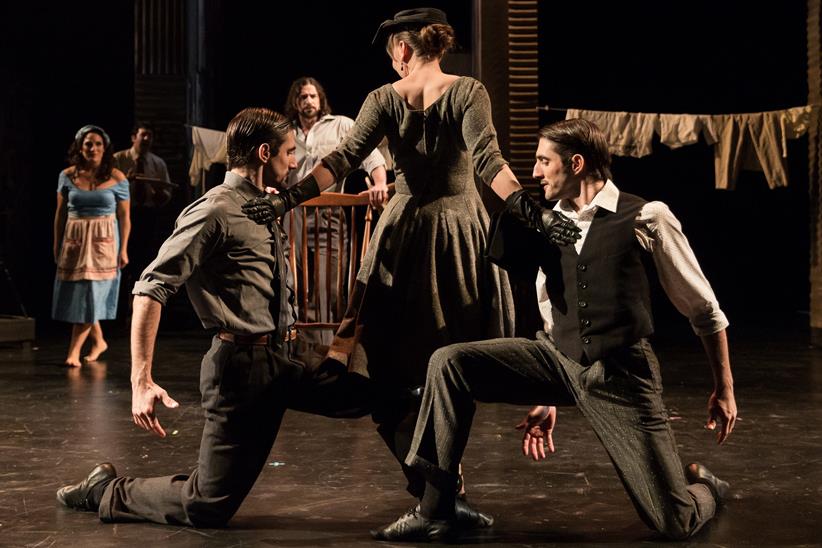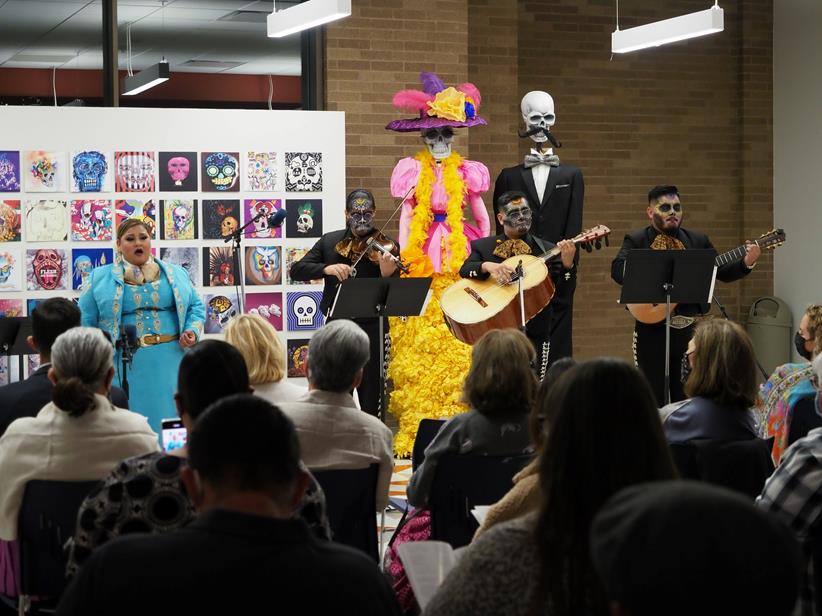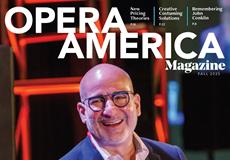Building Bridges

The news coming from the U.S.-Mexico border often ranges from negative to deeply disturbing. For opera companies located in the southernmost parts of America, though, collaborations across the border are the norm, bringing joy, friendship, and a model for how people from different cultures can create beautiful music together.
David Bennett, general director of San Diego Opera, has always seen a great business case for cross-border collaborations. “Our audience doesn’t just stop at the U.S. border,” he says. “We have a lot of people from Baja and Tijuana that come see our productions.”
But his focus on cultural exchanges comes from a deeper place, as well. “We are nonprofits,” he says. “We don’t have equity owners like a for-profit company does. We have a board of directors, but they’re not the owners. So, who are we beholden to? Our community.” Given that the majority of San Diego residents identify as Hispanic, “We have to make sure the community we sit within sees themselves in this company and feels comfortable coming because they’re part of our family.”
One of the company’s first programs to reach the Spanish-speaking community was Opera en Español, featuring native Spanish-language singers such as Mexican tenor Arturo Chacón-Cruz and Mexican American performers Ailyn Pérez and Joshua Guerrero. San Diego Opera is also developing El último sueño de Frida y Diego, a new Spanish-language work by librettist Nilo Cruz and composer Gabriela Lena Frank that is being co-commissioned and co-produced with San Francisco Opera.
A few years ago, Bennett started judging the Sinaloa International Singing Competition in Culiacán. He befriended Enrique Patrón de Rueda, a highly respected singing coach and frequent conductor at the Palacio de Bellas Artes in Mexico City. The two are in early talks about creating a young artist program in San Diego that would bring together performers from both countries.
In perhaps its most ambitious cross-border collaboration yet, San Diego Opera is finishing work on a film version of Daniel Catán and Juan Tovar’s La hija de Rappaccini. Filming was done in San Diego, Mazatlán, and at the Jardín Botánico Culiacán, where the filmmakers gathered many evocative images of the ill-fated botanist at work.
Cross-cultural collaborations are also thriving in Texas, where Austin Opera has a robust partnership with the Consulate General of Mexico in Austin. For over 25 years, the company has sponsored a program called La Noche de Opera, which organizes opera performances in a person’s home to introduce residents to the company and build connections with the Latinx and international community.
When the Hon. Carlos González Gutiérrez became consul general in Austin, he and Jennifer Basten, chief development officer at Austin Opera, initiated discussions about hosting performances in the consulate building. The office had recently moved to a much larger space and could accommodate bigger groups.
“East Austin has a long history of being steeped in Latin culture, and with nearly 200 Mexican and Mexican American Austinites coming through their doors on a daily basis, it seemed like an ideal venue for a partnership,” says Basten. “We thought it would be a great opportunity to reach a large segment of the Latinx community not currently being served by Austin Opera in a familiar setting.”
Austin Opera hired Mexican mezzo-soprano Claudia Chapa to curate the performances series, called Concerts at the Consulate. “We needed someone to authentically select the program, the music, and the artists we featured to ensure it resonated with the community,” says Basten.

Chapa immigrated to the United States at a young age, “so I identify with this idea of holding two cultures on your lap — the traditional culture you get at home and the new culture that’s around you all the time,” she says. Her goal is to feature Latinx composers whose work is steeped in the classical tradition and combine the musical performances with other important elements of Mexican culture.
The first concert featured mezzo-soprano Stephanie Sanchez singing opera and other Mexican classical music to honor Mexican Independence Day on September 18. A mariachi concert on November 1 featured mezzo-soprano Vanessa Alonzo and Trio Chapultepec, as well as a presentation by Mariana Nuño-Ruiz McEnroe and Ian McEnroe, co-authors of the book Dining with the Dead: A Feast for the Souls on Day of the Dead, which highlights the traditions behind Día de los Muertos. In the future, Chapa hopes to draw on the work of Indigenous Mexican and Latin American composers as well.
“This series is an exciting next step in the longstanding relationship between the opera and the Consulate, and we are grateful for the opportunity to collaborate with the Latinx community on programming for this series and beyond,” says Annie Burridge, the company’s general director and CEO. “We are also so fortunate to have an artist of Claudia Chapa’s caliber at the center of this project. Her deep knowledge of Latinx music, extensive artistic network, understanding of Mexican culture, and infectious enthusiasm bring so much to Austin Opera.”
Opera companies looking to increase their cross-cultural collaboration shouldn’t expect partnerships to happen overnight. “It takes a few years of relationship building to get to the point where you can come into someone’s space and collaborate as deeply as we are,” says Basten. While conversations began with Consul General Gutiérrez in 2018, the series launched this season thanks to the enthusiasm and collaborative spirit of the city’s current consul general, Pablo Marentes, and his team. “Take the time to get to know that community,” notes Basten. “We were fortunate that Consul Marentes already loved opera and trusted us to honor Mexican cultural heritage through the lens of opera and music.”
People from many backgrounds have much more in common than they may realize. “One thing we’ve spent a lot of time thinking about is, what is the centerpiece of what we do in opera?” says Bennett. “Really, what it’s about is the expressive potency of the human voice. We all know what it’s like to be moved by the spoken voice of someone we love. Every culture in the world uses the voice as a medium to express itself. That is the through line — the thing that draws us all together.”
Done right, cross-cultural collaborations can help companies become stronger and communities overcome divides, no matter where they are located.
This article was published in the Winter 2022 issue of Opera America Magazine.

Sophia Bennett
Sophia Bennett is the editor of Opera America Magazine.





